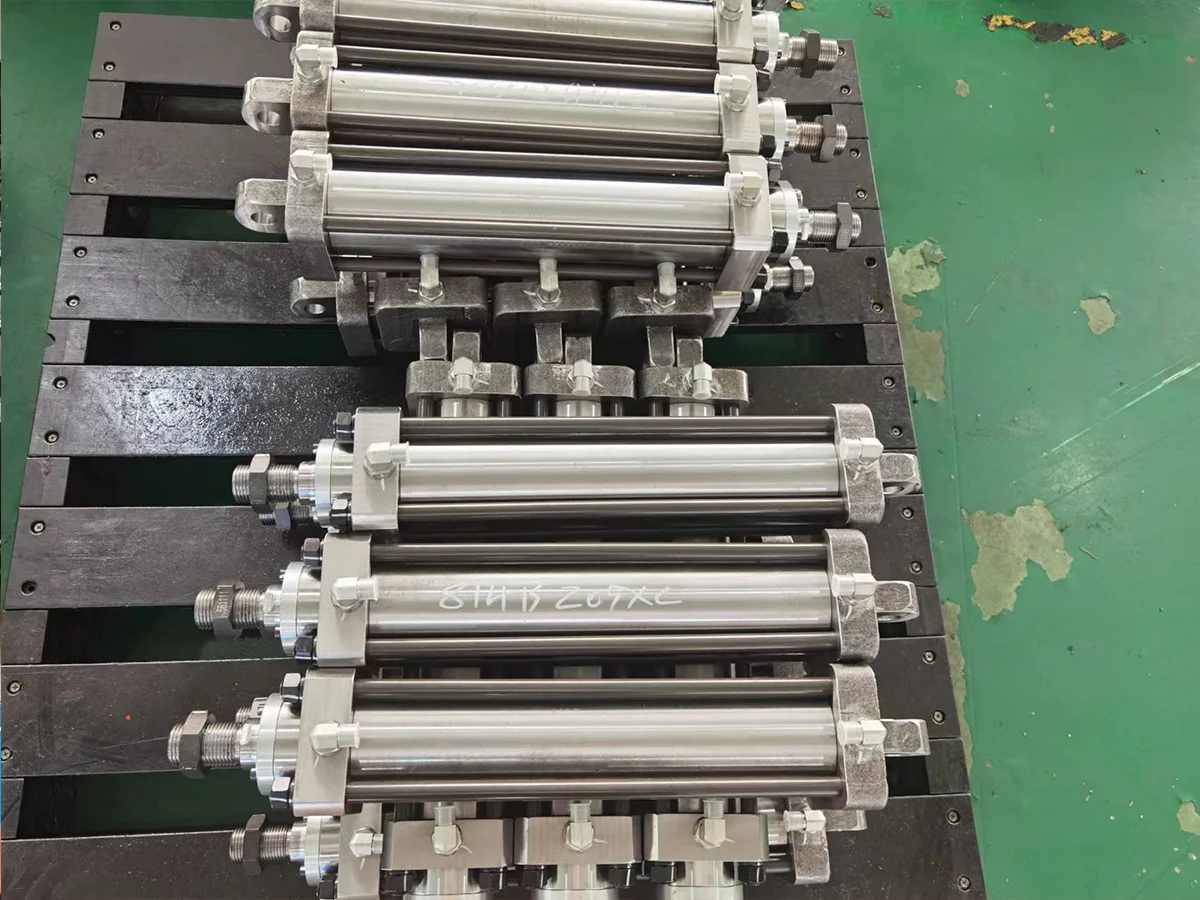- This topic is empty.
-
AuthorPosts
-
04/03/2024 at 15:08 #1659
Hydraulic system, as one of the indispensable power transmission methods in modern industry, is widely used in engineering machinery, manufacturing, aerospace and other fields due to its characteristics of large transmission force, flexible configuration and precise control. In these systems, tie rod cylinder plays a vital role. This article will discuss in detail the basic structure, working principle and specific application of tie rod cylinder in hydraulic systems.

Tie rod cylinder, as the name suggests, is a hydraulic actuator used to connect and transmit torque. It usually consists of a cylindrical metal shell, an internal piston, seals and connecting rods at both ends. When hydraulic oil enters one side of the cylinder under pressure, the piston will be pushed, thereby driving the connecting rod to achieve linear motion or swing to complete the conversion and transmission of mechanical energy.
In the matching of hydraulic systems, the design of tie rod cylinder needs to meet specific mechanical performance requirements. For example, its size and material must be able to withstand the expected loads, while the speed at which the piston moves depends on the flow of hydraulic oil and the size of the cylinder itself. In addition, in order to adapt to different working environments, tie rod cylinders are usually equipped with accessories such as dust seals and buffer devices to improve the reliability and service life of the system.
In terms of hydraulic system applications, tie rod cylinders can be used in a variety of scenarios. In the field of heavy machinery, such as excavators, loaders, etc., tie rod cylinders are often used to lift and turn buckets. Its excellent load-bearing capacity and stable performance are the key to completing these high-load operations. In the automobile manufacturing industry, tie rod cylinder is used for the adjustment and maintenance of vehicle steering systems to ensure driving safety and comfort.
In addition to the common applications mentioned above, tie rod cylinders also play an important role in some special industrial processes. For example, in hydraulic systems operating at high temperatures or in corrosive environments, the material and design of the tie rod cylinder must be able to withstand the effects of extreme conditions. In this case, the use of special alloy materials and high-performance seals is particularly important.
During the design phase of the hydraulic system, engineers will select the appropriate tie rod cylinder based on specific application requirements. This includes determining the appropriate operating pressure, stroke length, mounting method and whether smart components such as sensors need to be integrated for finer control. Through precise calculation and careful design, it is possible to ensure that the tie rod cylinder and its matching hydraulic system work together to achieve optimal performance.
It is worth noting that with the development of technology, the tie rod cylinder is also constantly evolving. Intelligent and modular designs make them easier to maintain and upgrade. At the same time, the application of new materials is also further improving its performance. For example, the use of carbon fiber reinforced plastics can reduce weight and improve response speed.
In practical application cases, the advantages of tie rod cylinder have been fully demonstrated. For example, in a certain bridge construction project, in order to achieve precise docking of the bridge deck, the engineering team used a special long-stroke tie rod cylinder to accurately control the position of each part of the bridge deck, and finally successfully completed the assembly of the bridge. This process demonstrates the irreplaceability of tie rod cylinders in the manipulation of large structures.
In summary, tie rod cylinder is an indispensable component of the hydraulic system. With its unique structure and diverse functions, it provides stable and reliable power support for all walks of life. Whether in traditional construction machinery or cutting-edge technology products, tie rod cylinder has won the favor of engineers and technicians with its excellent performance and wide range of applications. With the continuous advancement of technology, tie rod cylinder will definitely show greater potential and value in the design and practice of hydraulic systems in the future.
Why is the tie rod cylinder popular?
How to choose the right tie rod cylinder for your hydraulic system
Tie rod cylinder maintenance and care guide
Tie Rod Cylinder: The backbone of industrial applications
Choosing the right tie rod cylinder: the perfect match for your engineering needs
Analyze the structure and working principle of tie rod cylinder
Hydraulic weapon: tie rod cylinder classification analysis and application
Key components in hydraulic systems: reliability and life evaluation of tie rod cylinder
How to choose a quality tie rod cylinder manufacturer: key strategies and considerations
Protect your investment: effective anti-corrosion measures for tie rod cylinders
Hydraulic tie rod cylinder sealing technology: the key to optimized performance and extended life
Detailed explanation of precautions and operating procedures for safe use of tie rod cylinders
Factors and analysis affecting the price of tie rod cylinders
Material selection for tie rod cylinders: a balance between performance and application
tie rod cylinder and welded cylinder, which one to choose?
Key factors in selecting tie rod cylinder size specifications
Analysis of the working environment of tie rod cylinder
The history and future development trends of tie rod cylinder
-
AuthorPosts
- You must be logged in to reply to this topic.